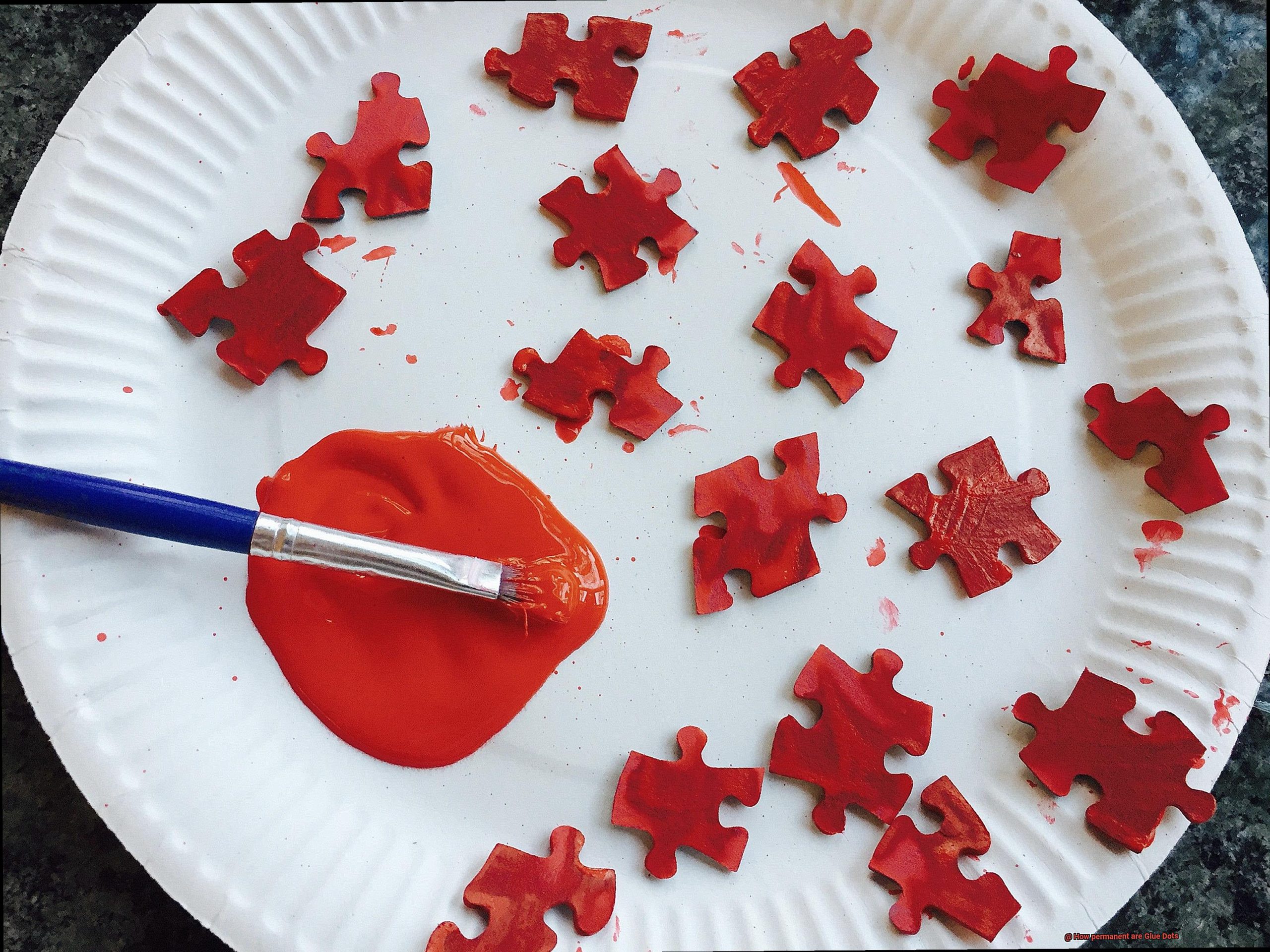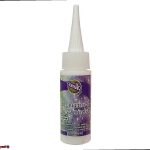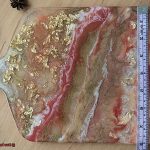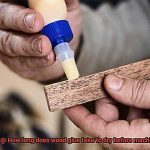Have you ever wondered how permanent Glue Dots really are?
Whether you’re crafting, decorating, or mounting lightweight objects, Glue Dots can be a game-changer. They’re easy to use and super versatile, but can they stand the test of time?
In this article, we’ll dig deep into the world of Glue Dots to uncover their true staying power. We’ll explore the different types of Glue Dots out there, find out which surfaces they stick to best, and share some pro tips to make sure your projects stay put.
So if you’re ready to learn all about the durability of Glue Dots, grab a seat and let’s dive in.
How Long Do Glue Dots Last?
Contents
- 1 How Long Do Glue Dots Last?
- 2 Factors That Determine the Permanence of Glue Dots
- 3 Glue Dots vs Other Adhesives
- 4 Tips for Enhancing the Durability of Glue Dots
- 5 Cleaning the Surface Before Applying Glue Dots
- 6 Temperature and Humidity Considerations for Glue Dots
- 7 Storing Glue Dots Properly
- 8 Removing Glue Dots Safely
- 9 Conclusion
Glue dots are the unsung heroes of adhesives, offering a mess-free and convenient way to stick items together. But how long can these tiny dots of adhesive really last? In this article, we will explore the factors that influence the lifespan of glue dots and provide you with expert tips to maximize their adhesive power.
Factors Affecting Longevity:
- Surface Type: Glue dots thrive on clean, dry, and smooth surfaces. Rough or textured surfaces offer fewer contact points for the adhesive to cling onto, resulting in weaker adhesion and a shorter lifespan.
- Temperature: Extreme temperatures can play havoc with glue dots. High temperatures cause them to soften or melt, while low temperatures render them brittle and less effective.
- Humidity: Excessive humidity weakens the adhesive bond over time, causing glue dots to lose their stickiness and peel away from the surface.
- Weight and Pressure: The weight and pressure applied to an object adhered with glue dots can affect their longevity. Constant stress or heavy loads can weaken or break the adhesive bond.
Typical Lifespan:
- Short-term Use: For temporary applications like crafting projects or decorations, glue dots provide a reliable hold for several hours up to a few days.
- Medium-term Use: When moderate durability is required, such as securing lightweight items or mounting posters on walls, glue dots maintain their adhesive properties for a few weeks to a couple of months.
- Long-term Use: In more permanent applications like attaching nameplates, signage, or product labels, glue dots offer a strong bond that lasts for months or even years.
Tips to Maximize Longevity:
- Surface Preparation: Ensure the surface is clean, dry, and free of dust or oils before applying glue dots to optimize their effectiveness and lifespan.
- Temperature and Humidity Control: Avoid subjecting glue dots to extreme temperature or humidity conditions whenever possible to maintain their adhesive strength.
- Weight Distribution: When using glue dots to adhere heavier objects, distribute the weight evenly across multiple dots to prevent excessive stress on a single bond point.
- Regular Maintenance: Periodically check the adhesion of glue dots and replace any that have weakened or detached to ensure a strong bond over time.
Factors That Determine the Permanence of Glue Dots
Glue dots may be small, but their sticking power should not be underestimated. The length of time they remain attached can vary, depending on a range of factors. In this article, we will delve into the captivating world of glue dots and uncover the key elements that determine their longevity.
Composition of Glue Dots:
The first factor to consider is the composition of glue dots themselves. With different adhesive formulations available, each possesses its own unique qualities. Some glue dots are designed for temporary applications, allowing for easy residue-free removal.
In contrast, other formulations are created to forge a stronger, more lasting bond. Understanding the specific ingredients and formulation of glue dots is crucial in determining their permanence.
Surface Type:
The surface to which you apply the glue dot plays a pivotal role in its lasting power. Glue dots adhere most effectively to smooth, non-porous surfaces like glass or plastic, where they find an ideal contact area to bond with strength.
However, rough or porous surfaces such as fabric or wood can present challenges for glue dots. The texture and porosity of the surface can impact both the adhesion and longevity of the glue dot.
Environmental Conditions:
Environmental factors, including temperature and humidity, wield significant influence over the permanence of glue dots. Extreme heat or cold weakens adhesive properties, diminishing their effectiveness over time. Similarly, high humidity levels can compromise the bonding strength of glue dots. Considering the environmental conditions in which glue dots will be used is vital to predicting their potential longevity.
Application Technique:
Proper application technique is essential for maximizing the permanence of glue dots. Applying adequate pressure when placing the dot on a surface activates its adhesive properties and ensures a formidable bond. Additionally, adhering to manufacturer instructions regarding surface preparation, drying time, and curing time can also significantly contribute to the lifespan of glue dots.
Removal Method:
The final factor to consider is the method used to remove glue dots. Some glue dots are designed for easy removal, leaving no residue or damage behind. However, forceful removal or the use of harsh chemicals can result in damage or sticky residue, making glue dots more difficult to remove and potentially impacting their permanence.
Glue Dots vs Other Adhesives
Sick of dealing with messy liquid glues and tape that leaves behind a sticky disaster? Well, hold onto your hats because today we’re diving deep into the world of Glue Dots and pitting them against other adhesives. Get ready for a sticky showdown like no other.
Let’s kick things off with the advantages of Glue Dots. First up, these bad boys are permanent. Say goodbye to adhesives that lose their grip over time. Glue Dots are known for their iron-clad hold, making them perfect for projects that demand a secure bond. No more worrying about your creations falling apart.
But wait, there’s more. Convenience is the name of the game with Glue Dots. Traditional liquid glues can be a hot mess, requiring drying time that kills your crafting mojo. But fear not, my friends, because Glue Dots offer an instant bond without any waiting around. That means less downtime and more time unleashing your creative genius.
Versatility is another feather in Glue Dots’ cap. These little gems can stick to just about anything – paper, plastic, fabric, metal, wood – you name it. Whether you’re jazzing up cards or securing items in gift boxes, Glue Dots have got you covered. They’re like the superheroes of adhesives.
Now let’s talk tape. While tape can bring the strength, it might not have the same versatility as Glue Dots. Tape is often designed for specific applications and can struggle to adhere to certain surfaces or materials. Plus, when the time comes to remove it, tape can leave behind a sticky residue or even damage delicate surfaces. Talk about a buzzkill.
But fear not, dear adhesive seekers, because Glue Dots are here to save the day. They’re designed to be removable without leaving a sticky mess behind. And they pose less risk of damaging delicate surfaces since they don’t require any forceful removal like tape does. So if you’re all about temporary or repositionable adhesion, Glue Dots are your new best friend.
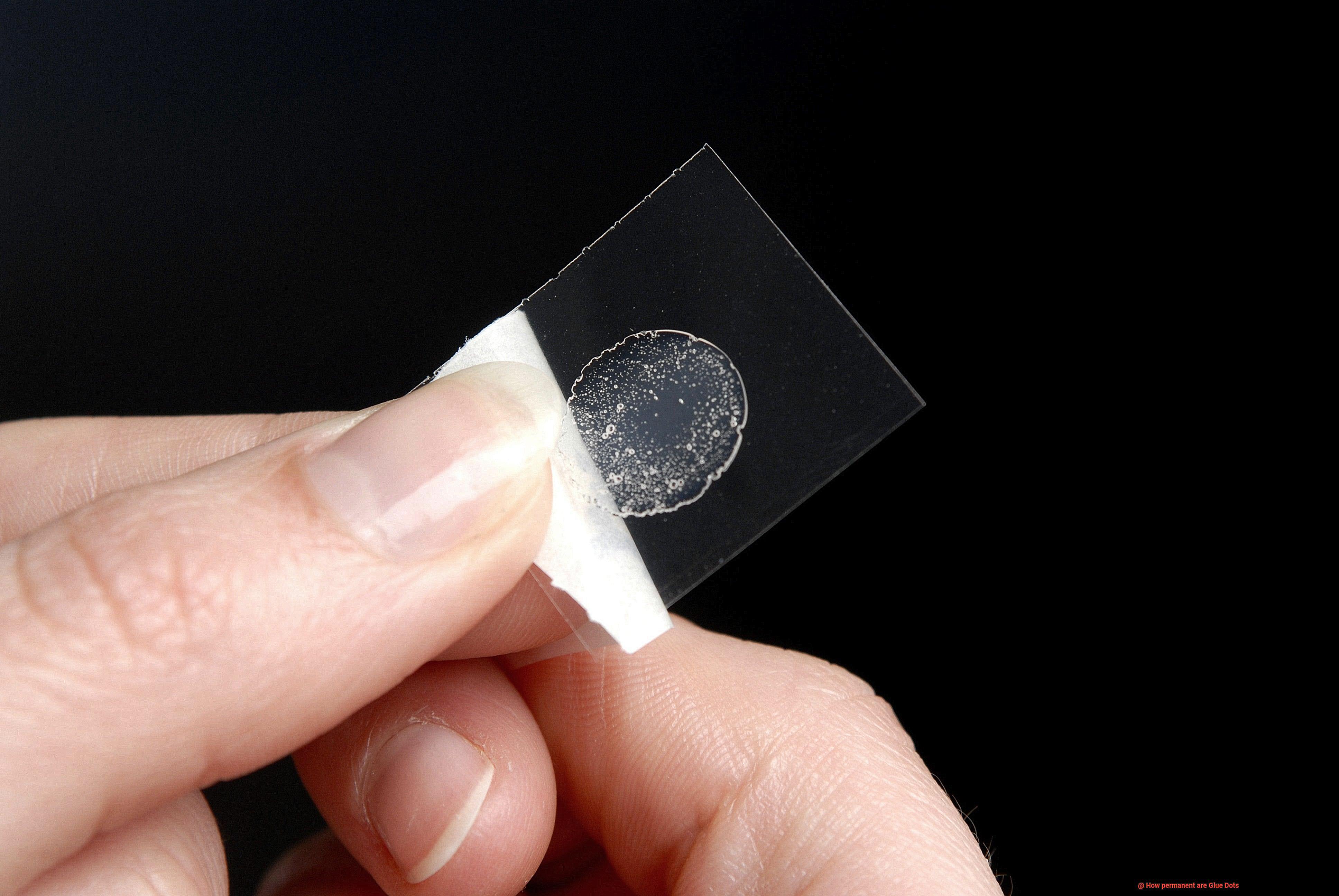
Now, before you go all-in on Glue Dots, remember that their permanence can vary depending on factors like surface type, object weight, and environmental conditions. It’s always a good idea to do a small test first, just to be on the safe side.
In conclusion, Glue Dots are the adhesive superheroes we’ve all been waiting for. They offer a rock-solid hold, instant bonding, and versatility that puts tape to shame. Plus, their residue-free removal and gentle touch make them the champions of the adhesive world. So go ahead and stick it to ’em with Glue Dots.
Tips for Enhancing the Durability of Glue Dots
Glue Dots are a popular adhesive option that provides a quick and convenient way to stick items together. While they offer a strong initial bond, there are several tips and techniques that can enhance their durability. In this blog post, we will explore five tips for maximizing the longevity of Glue Dots.
Start with a Clean Surface:
Before applying Glue Dots, it’s crucial to ensure that the surface is pristine, free from any dirt, dust, or grease. Give it a thorough wipe with a mild detergent or rubbing alcohol to eliminate contaminants and allow the adhesive to bond effectively and securely.
Apply Evenly and Firmly:
To achieve a robust bond, it is imperative to apply the Glue Dots evenly and press them firmly onto the surface. Uneven application can create weak spots and jeopardize the bond’s durability. Use a roller or press down on the Glue Dots with a flat object to achieve uniformity and maximize adhesion.
Consider Temperature and Humidity:
Extreme temperatures can impact the performance of Glue Dots. For optimal results, use them at room temperature. Additionally, high humidity can make the adhesive tacky, so storing Glue Dots in a cool, dry place preserves their effectiveness.
Reinforce for Added Strength:
For stronger bonds, consider doubling up on Glue Dots by placing two or more together. This increases the adhesive contact area and provides added strength. When working with heavier or rigid materials, using larger-sized Glue Dots can enhance durability.
Avoid Excessive Handling:
Once applied, minimize handling or touching of the Glue Dots until they have fully set and dried. Excessive rubbing or pulling can weaken their adhesion over time. Allow ample time for them to cure before subjecting them to stress or pressure.
Cleaning the Surface Before Applying Glue Dots
Cleaning the surface before applying Glue Dots is a critical step in ensuring strong and long-lasting adhesive bonds. By taking the time to properly clean and prepare the surface, you can maximize the adhesion and longevity of your Glue Dots. Here are several reasons why cleaning the surface is so important:
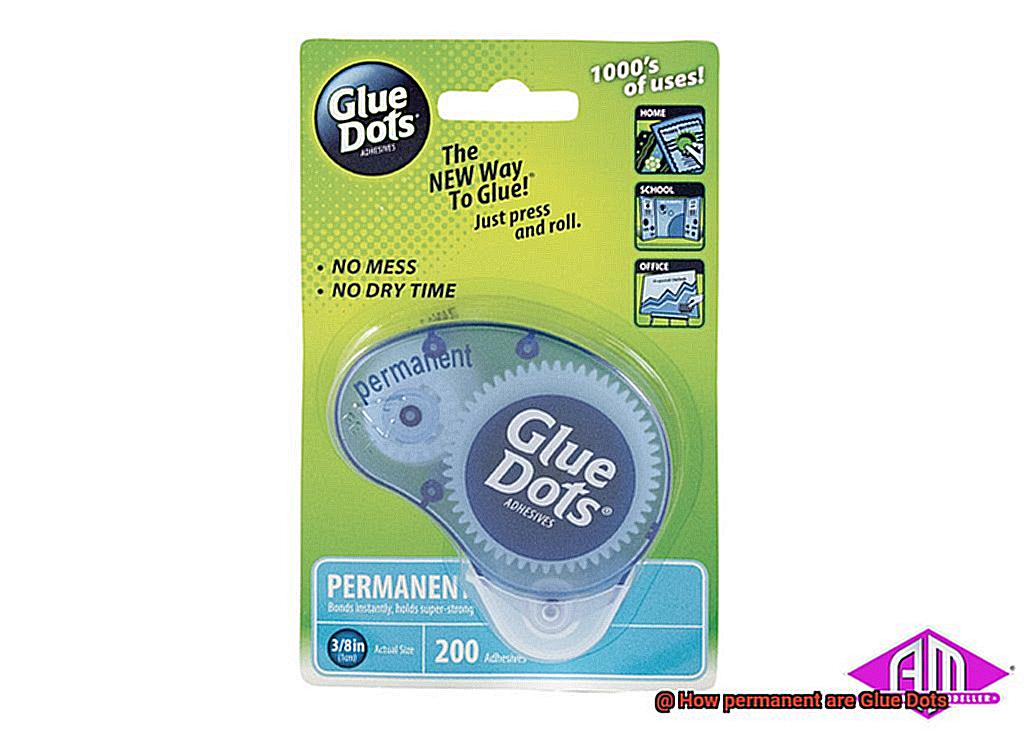
- Removing dust and dirt: Dust and dirt particles can create a barrier between the adhesive and the surface, weakening the bond. By thoroughly wiping down the surface with a cloth or soft brush, you can eliminate these particles and ensure a clean bonding surface.
- Degreasing the surface: Grease and oil residues can sabotage the adhesive properties of Glue Dots. It’s essential to remove any grease or oil before applying the adhesive. By using a degreasing agent like isopropyl alcohol or a mild solvent, you can effectively clean the surface and ensure a strong bond.
- Ensuring dryness: Moisture is another enemy of adhesive bonds. Before applying Glue Dots, make sure that the surface is completely dry. Allowing it to air dry naturally or using a clean, lint-free cloth will prevent any moisture from compromising the bond.
- Smoothing out rough surfaces: Rough patches or uneven areas on the surface can create gaps between the adhesive and the material, compromising the bond’s strength. By gently smoothing out these imperfections with sandpaper or an abrasive tool, you can ensure a flat and even bonding surface.
- Considering surface materials: Different surface materials may require specific cleaning methods. Glass surfaces can be effectively cleaned with glass cleaners, while plastic surfaces may require alcohol-based cleaners. Always consult the manufacturer’s guidelines for specific cleaning instructions to optimize adhesion with Glue Dots.
Temperature and Humidity Considerations for Glue Dots
Glue Dots are versatile adhesive solutions that can be used for a wide range of applications. However, to achieve optimal results, it is crucial to understand how temperature and humidity can affect their performance and durability. In this article, we will explore the effects of these environmental factors on the adhesive strength of Glue Dots, providing valuable insights to ensure a strong and long-lasting bond.
Temperature Considerations:
- Optimal Temperature Range: Glue Dots work best within a temperature range of 50°F to 100°F (10°C to 38°C). Using them outside this range may compromise their adhesive properties.
- Low Temperatures: Extremely low temperatures can make Glue Dots less tacky, resulting in weaker adhesion. They can also become brittle, increasing the risk of cracking or breaking.
- High Temperatures: Excessive heat can cause the adhesive in Glue Dots to soften and become gooey or even melt. This can lead to adhesive transfer or loss of shape and integrity. High temperatures can also reduce the tackiness of Glue Dots, weakening their bond.
Humidity Considerations:
- Moisture and Adhesive Strength: High humidity levels can weaken the adhesive properties of Glue Dots as moisture seeps into the adhesive, compromising its strength. This is particularly true for water-based adhesives used in some types of Glue Dots.
- Specialized Glue Dots for Extreme Conditions: In cases where extreme temperatures or high humidity levels are anticipated, specialized Glue Dots designed to withstand such conditions may be necessary.
Storage Recommendations:
- Cool and Dry Environment: To maintain the adhesive properties and extend the shelf life of Glue Dots, store them in a cool, dry place away from direct sunlight and extreme temperature fluctuations.
- Proper Cleaning: Before applying Glue Dots, ensure that the surface is clean and free from dust, grease, and moisture. This will help optimize the adhesive bond.
Storing Glue Dots Properly
Glue Dots, those versatile adhesive dots that can tackle any task with ease, have become your go-to adhesive superheroes. Whether you’re a crafting aficionado or a DIY enthusiast, you understand the power of these tiny dots. But did you know that their powers can be affected by improper storage? Fear not, fellow glue enthusiasts. In this guide, we’ll reveal the secret to storing Glue Dots properly, ensuring they stay sticky and ready for action.
- Find the Perfect Lair: Like all superheroes, Glue Dots thrive in cool and dry environments. To keep them in prime condition, avoid storing them in areas prone to extreme temperatures or humidity. Say no to radiators, windowsills, or bathrooms. Instead, find a cool spot away from direct sunlight and temperature fluctuations.
- Keep Them Safe in Their Fortress: To protect your adhesive heroes from the elements, house them in their original packaging or an airtight container. This fortress will prevent them from drying out or becoming contaminated. Plus, it keeps dust and debris at bay, ensuring your Glue Dots stay clean and ready for action.
- Beware of Heat and Moisture: Just like a superhero’s weakness, Glue Dots are like melting ice cubes when exposed to extreme heat. Their adhesive powers melt away, leaving you with a useless blob. Likewise, excessive moisture can make them soggy and less effective. So, keep them away from radiators or steamy bathrooms – it’s their kryptonite.
- Keep Them Out of Reach: While Glue Dots may be harmless in the right hands, they can be dangerous when ingested or misused by children or pets. So, store them in a place where little hands and curious paws can’t reach. Safety first, my friends.
- Label and Check: To keep track of your Glue Dots’ shelf life, it’s a good idea to label the container with the date of purchase or expiration date, if available. This way, you’ll know when it’s time to replace them. And don’t forget to periodically check the condition of your stored Glue Dots. If they’ve become dry or lost their adhesive properties, it’s time to bid them farewell and welcome a fresh batch.
Removing Glue Dots Safely
Removing Glue Dots Safely: The Ultimate Guide for Superheroes and Everyday Heroes.
Greetings, fellow adhesive enthusiasts. Today, we embark on an exciting journey into the world of glue dot removal. Whether you’re a crafting superhero or an everyday hero facing sticky situations, mastering the art of safely removing glue dots is a skill worth acquiring. So, fasten your cape and let’s dive in.
The Heat is On:
When it comes to loosening stubborn glue dots, heat can be your best ally. Here’s how to unleash its power:
- Grab a hairdryer or heat gun and set it to a low temperature.
- Gently warm up the glue dot, allowing it to soften gradually.
- Carefully peel off the glue dot using your fingers or a plastic scraper.
- Remember to exercise caution to avoid damaging surfaces with excessive heat.
Solvent Saviors:
For those tenacious glue dots that refuse to budge, solvents come to the rescue. Follow these steps for successful removal:
- Choose a solvent or adhesive remover such as rubbing alcohol, acetone, or commercial adhesive removers.
- Test the solvent on a small, inconspicuous area to ensure it won’t damage the surface.
- Apply the solvent to a cloth or cotton ball and gently rub it over the glue dot until it dissolves.
- Wipe away any residue with a clean cloth.
Oiling Up:
When delicate surfaces call for extra care, oil-based substances step in as heroes. Here’s how to save the day:
- Reach for cooking oil or baby oil, perfect for delicate surfaces and worried heroes.
- Apply a small amount of oil to the glue dot and let it sit for a few minutes, allowing it to penetrate the adhesive.
- Gently rub the glue dot with your fingers or a soft cloth until it starts to loosen its grip.
- Peel it off without leaving any marks or residue behind.
Freezing Time:
When dealing with fabric, freezing can be your secret weapon against glue dots. Here’s the chilling strategy:
- Pop the fabric in the freezer for a few hours, giving the glue dot a taste of its own medicine.
- The cold temperature will harden the adhesive, making it easier to peel off without damaging the fabric.
- Once frozen, gently scrape off the glue dot with a plastic scraper or your trusty fingernail.
- Use a fabric-safe adhesive remover or rubbing alcohol to clean any remaining residue.
Smooth Moves:
Glass or other smooth surfaces require special tactics to defeat glue dots. Here’s your winning plan:
- Equip yourself with a razor blade or plastic scraper, the sidekicks you need.
- Hold the blade or scraper at a slight angle and carefully scrape off the glue dot.
- Avoid applying excessive pressure to prevent scratching the surface.
- Clean the area with glass cleaner to ensure a spotless victory.
AQ8cEI–UlU” >
Conclusion
Glue Dots, those tiny adhesive wonders, have gained popularity for their convenience and versatility.
But just how permanent are they? Well, let me tell you, these little dots pack a punch when it comes to sticking power.
Once applied, they hold on tight, creating a bond that is not easily broken. Whether you’re crafting, decorating, or organizing, Glue Dots are up to the task.
They adhere firmly to a variety of surfaces, from paper and fabric to plastic and metal.

